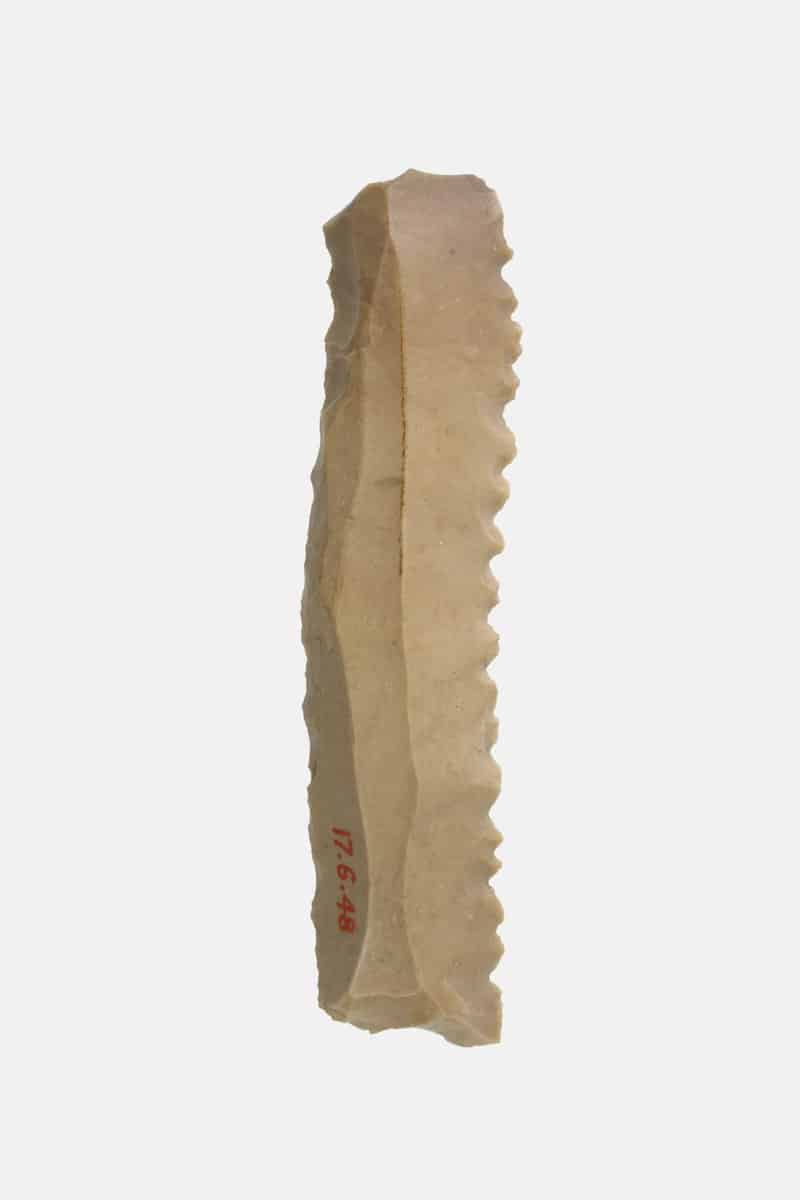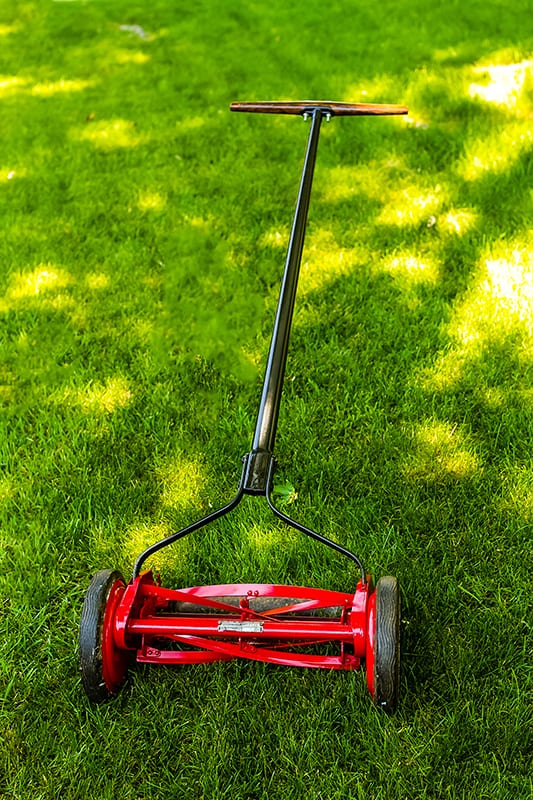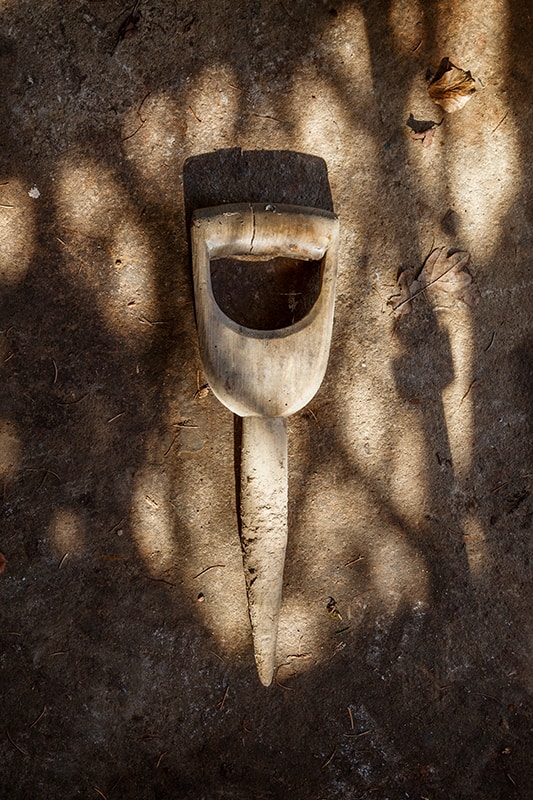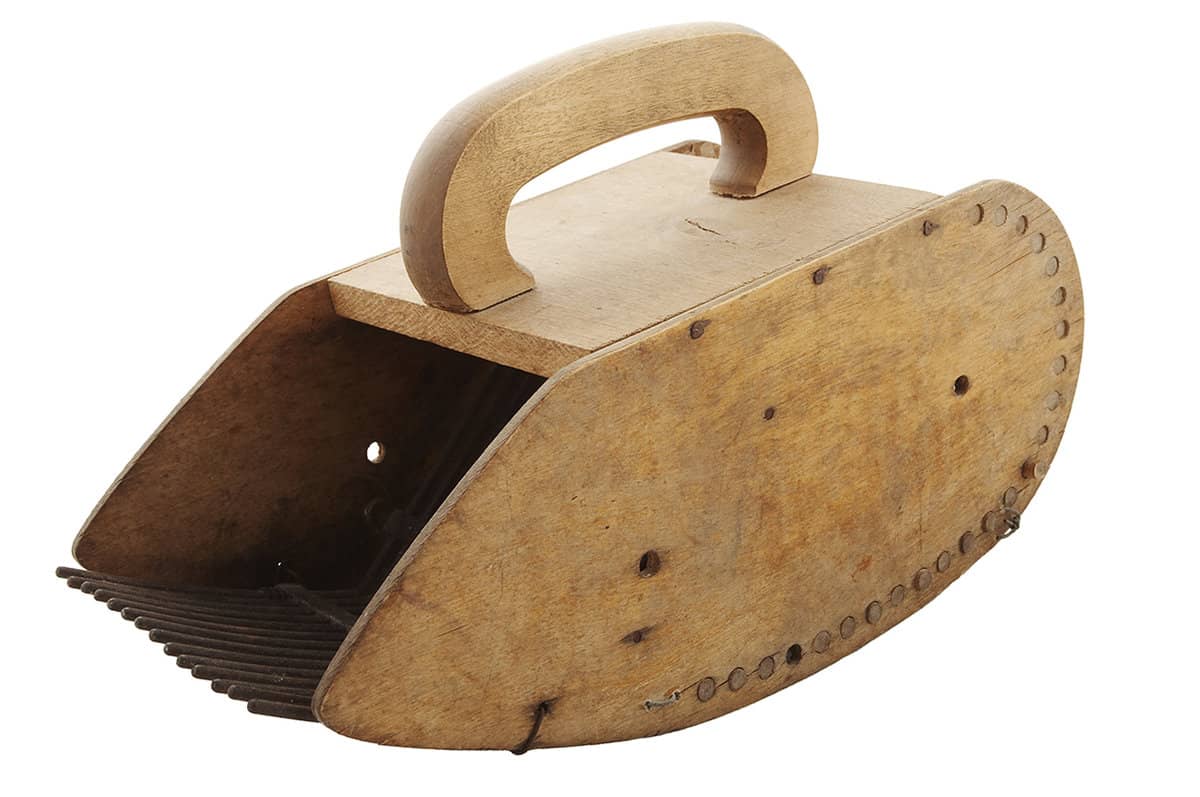Get ready for a journey through time, to the very origins of gardening when the first human decided to plant seeds to grow and consume crops.
That was over 10,000 years ago, and since then, gardening has evolved with the latest advancements in technology, resulting in tools that make the activity a lot easier.
For instance, from highly durable gardening gloves to self-sharpening tools, modern gardeners enjoy these innovative tools.
Did you know that self-sharpening shears were only patented in the 1940s? That's right - just over 80 years ago!
Have you ever wondered how our ancestors managed to garden without modern tools?
Imagine tending to your garden without the convenience of modern tools. Yikes!

Gardening tools have come a long way.
From the ancient sickle (pictured above) that the Egyptians used to the potato harvesting scoop that helped a lot of gardeners in the 19th century, gardening tools continue to evolve to answer our growing demand for comfort.
Tracing The Roots Of Your Garden Tools
Over the years, we have transformed simple garden tools into complex, multi-use ones that can cover a whole lot of chores in one go.
Do you ever wonder what it would be like to garden 100 years ago? It's intriguing to imagine how our ancestors managed to tend to their gardens without our modern tools.
Let's dive in to have a look at some of the intriguing gardening tools from the past.
Manual Reel Lawn Mowers
If you happen to own an expansive lawn, it could be nearly unimaginable to think about maintaining it without a lawn mower. Modern lawnmowers are usually powered by a motor and cutting implements run at a high-speed resulting in precise and even cuts.
However, that was not the case during the 19th century. Before the first automatic lawn mower, there were manual lawnmowers that involve rotating blades that will only work when the device is pushed.
One type of such lawn mower is called a reel lawn mower.

Patented in the United States by a man named Amariah Hills, the device was meant to ease the chore of trimming overgrown grass in gardens and lawns.
This was the first reel-type lawnmower introduced in the United States on January 28, 1868. A similar device was already patented in England decades prior.
Manual reel lawnmowers still exist today, and their mechanics are pretty much the same. However, they are not as common as the modern types of lawnmowers.

Dibber/Dibbler
Existing since Roman times, a dibber is an agricultural tool present in both farming and gardening activities. It is a tool used to poke holes in the soil, creating a deep hole where seeds will be inserted.

Farmers used rotating dibbers connected to a long shaft in order to quickly poke the soil without the effort of squatting for a long time. Usually, another person would be following behind in order to fill the hole with seeds.
Nowadays, the consensus for the tool is mixed. Some gardens claim that a dibber is an essential gardening tool, but others say that an experienced hand and a garden trowel are enough.
Modern dibbers stay in the market, though. And nowadays, some have horizontal lines incorporated into the body of the tool to provide the gardener with an accurate measurement.
Some have t-shape for handles that allows easier grip.

Scythes
Nowadays, you might recognize a scythe as more of a prop used by a certain scary character that people commonly dress up as during Halloween. A scythe is a long tool with a curved, sharp blade that may look better in place inside a butcher shop rather than in your flowery garden.
However, it should come as no surprise that scythes were a fairly common tool back in the time when modern tractors weren't yet so common or even invented yet.

Scythes have been used by modern humans for millennia. The tool got its start around 5,000 BC, during the time the agricultural development was in full swing.
As humans became more settled in lands and turned to gardening and farming in order to grow food, scythes were utilized to cut down tall crops like wheat, fodder, and rice. The crops get cut down in the process of harvesting.
Usually made of a long, wooden shaft, and a sharp, curved blade, scythes were a tool commonly used by farmers to collect crops, and gardeners to cut down and trim the grass.
Gardeners would use scythes as a tool to easily trim down grass before modern mowers were invented. The sharp, curved blades of the scythe would be lowered to the ground, then the gardener would sweep the scythe across the grass to trim. The scythe-mowed ground is referred to as a swathe.
Scythes are still available today, and some have their sizes modified to accommodate different garden tasks. Large scythes are still commonly used in many parts of the world, both in farming and gardening.

Berry Pickers
Antique berry pickers have a comb, which has a similar appearance to modern rakes, but with a higher number of tines. This structure allows them to have teeth that gardeners would use to skim through berry-bearing plants in order to catch the tiny fruits in between.
An antique berry picker also has an open-faced compartment located directly above the tines to collect the berries. The head of the picker would usually have a handle, but some vintage berry pickers have shafts.

The berry pickers with handles make it easier for the gardeners to collect berries growing in low vines, shrubs, and bushes. The berry pickers that are connected to long shafts are for the gardeners who do not want to squat down while collecting berries for an extended period of time.
In the 19th century, berry picking was a very popular hobby. The activity also turned into a business endeavor for many Americans, especially during the aftermath of the Civil War when many people struggled financially.
The activity became so popular that people would build social ties over berry-picking, usually exchanging conversations over the berry bushes.
Berry pickers still exist today, and they still make use of the same concept. However, modern berry pickers are usually made out of plastic instead of steel or wood.

Claw Rake
Rakes are still commonly used today. Hand rakes are still common as well. Usually, these short and compact versions of a garden rake would be used to turn and till the soil around a small area in the garden.
They can also be used to move debris, although they will not be as effective with large jobs for obvious reasons.
Claw rakes are similar to hand rakes in scale, but their tines are shaped very differently.

A claw rake is exactly what the name suggests. It is a hand rake with its tines arranged in the shape of an animal's extended claw. The tines are also thick and a little pointed at the end, to allow it to easily dig into the soil.
Modern hand rakes are not the same. The majority of modern hand rakes have their tines lined up in a row, whether they are connected to a brace or a ferrule. There is also a modern hand rake referred to as a claw rake, but the tines are simply curved, not arranged in a curve.

The number of tines is usually varied in modern hand rakes. Some have lots of tines, while some have as little as three tines.
The Tools That Made Us
A lot of modern tools available today still resemble or reuse and develop the original concept of their old counterparts.
It is easy to see that we only take what we learned and applied what we know. This is in regard to the continuous development of gardening tools, or any other tools that we, as humans, use.
Much like how the stone axes predate daggers, and daggers influencing knives, it is safe to say that we will continue to create newer and better tools to make our lives easier and more comfortable.
